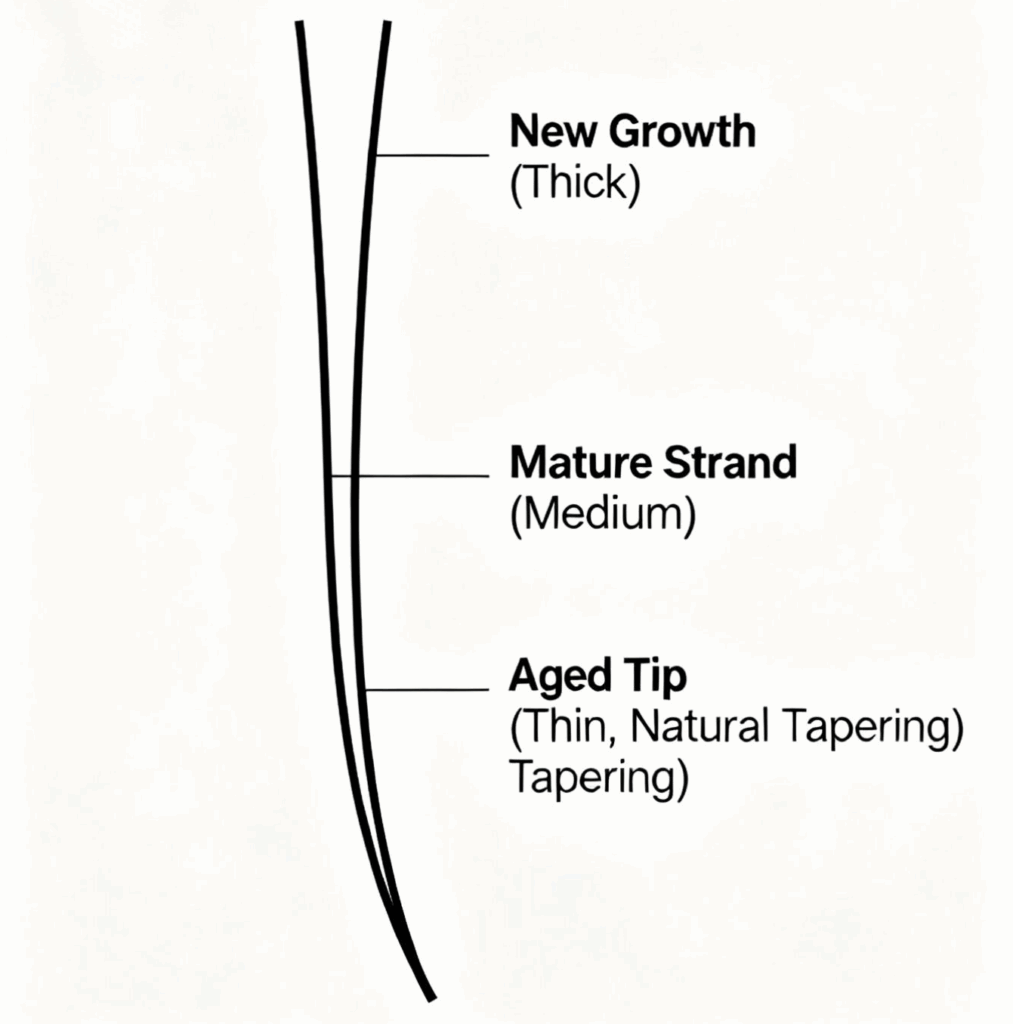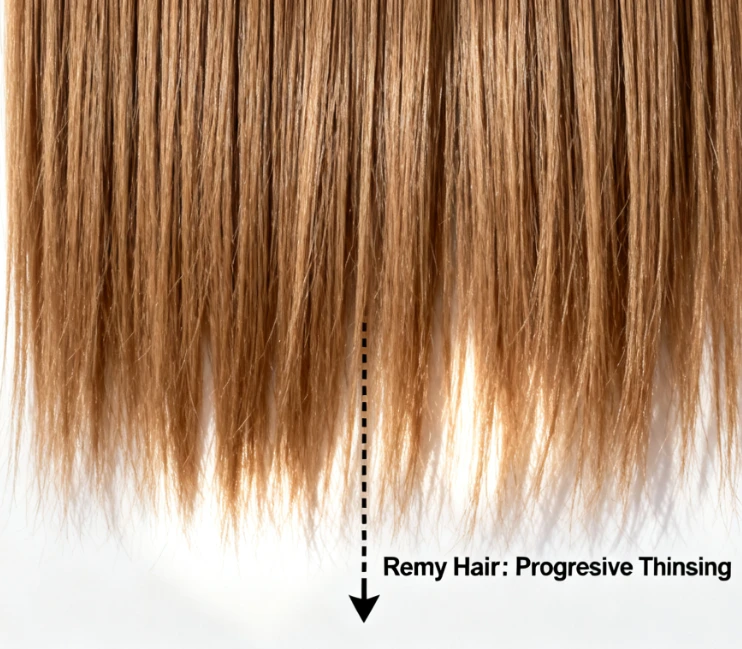If you’ve unboxed your new tape-in hair extensions and noticed: “The roots feel thick and full, but the ends of tape ins are way sparser”—you’re not alone. This is one of the most common questions our US customers ask, and 90% of the time, it’s not a quality issue—it’s tied to how real human hair works, plus intentional design choices for a natural look. Below, we break down the exact reasons behind this density difference, how to tell “normal thinness” from a problem, and how to keep ends full longer—backed by our 10 years of sourcing 100% Remy human hair for American stylists and customers.
FAQ: Why Do Tape-In Extensions Have Thinner Ends?
First, let’s clear a key myth: Uniform density from root to end doesn’t look natural—even your own biological hair is thicker at the scalp (where it’s new growth) and gradually thins toward the ends (where it’s older, exposed to heat/styling). For tape-in extensions (which are made from real human hair), this “root-to-end density transition” is either natural to the hair itself or intentionally designed to blend with your real hair. Here are the 3 main reasons:
Intentional “Gradient Cut” for Seamless Blending
If tape-in ends were as thick as the roots, they’d look like a “block” of hair when installed—dead giveaways that you’re wearing extensions. Our US-based design team uses a “gradient cut” (also called “point cutting”) on all tape-ins: we trim the ends of tape ins slight angles to thin them gradually. This lets the extensions merge with your natural hair’s ends (which are also thin) so no one can spot the line between your hair and the extensions.
Intentional “Gradient Cut” for Seamless Blending
If tape-in ends were as thick as the roots, they’d look like a “block” of hair when installed—dead giveaways that you’re wearing extensions. Our US-based design team uses a “gradient cut” (also called “point cutting”) on all tape-ins: we trim the ends at slight angles to thin them gradually. This lets the extensions merge with your natural hair’s ends (which are also thin) so no one can spot the line between your hair and the extensions.
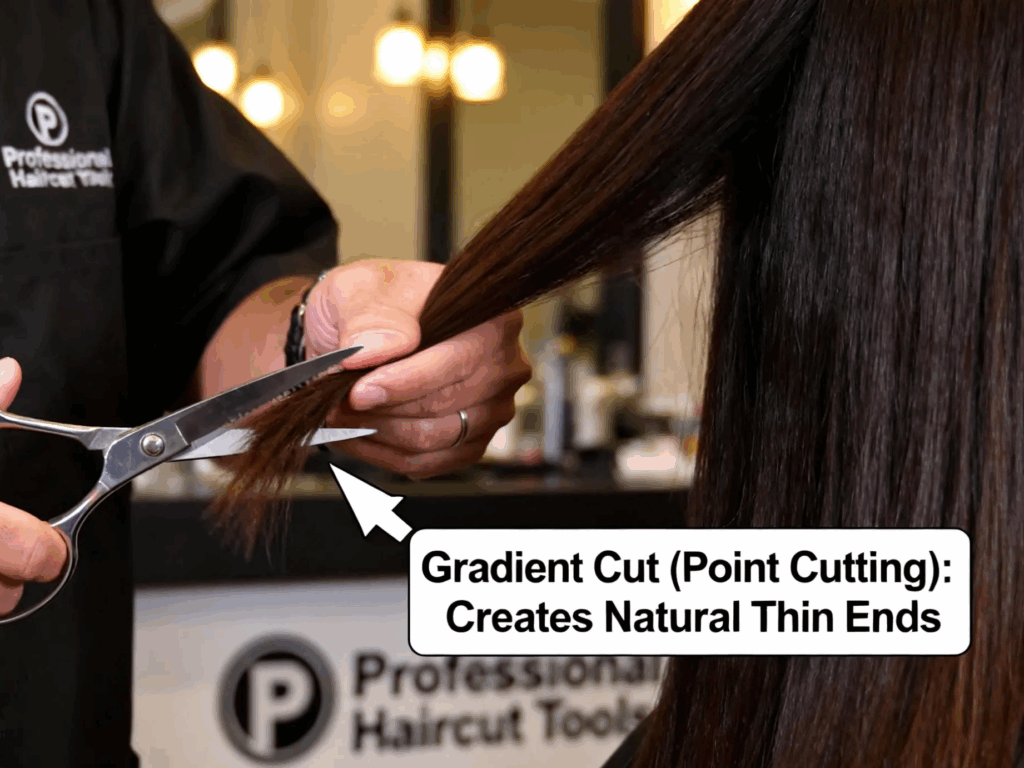
How to Tell: “Normal Thinness” vs. a Quality Problem
Not all end-thinness is intentional—here’s a quick checklist to confirm your extensions are in good shape (we recommend doing this right after unboxing):
| Normal Thinness (No Issue) | Quality Problem (Reach Out to Us) |
|---|---|
| Ends thin gradually—no sudden “drop-off” in density. | Ends are abruptly thin (e.g., roots are thick, but 2 inches from the end, density cuts in half). |
| Strands at the ends are smooth, not frayed or split. | Ends have split ends, tangles, or brittle strands (signs of low-quality hair). |
| Shedding stops after 1-2 brushes (under 5 strands total). | Shedding continues nonstop (10+ strands every time you brush). |
| Thickness matches your natural hair’s ends (blends easily). | Ends are so thin they look “stringy” and won’t blend. |
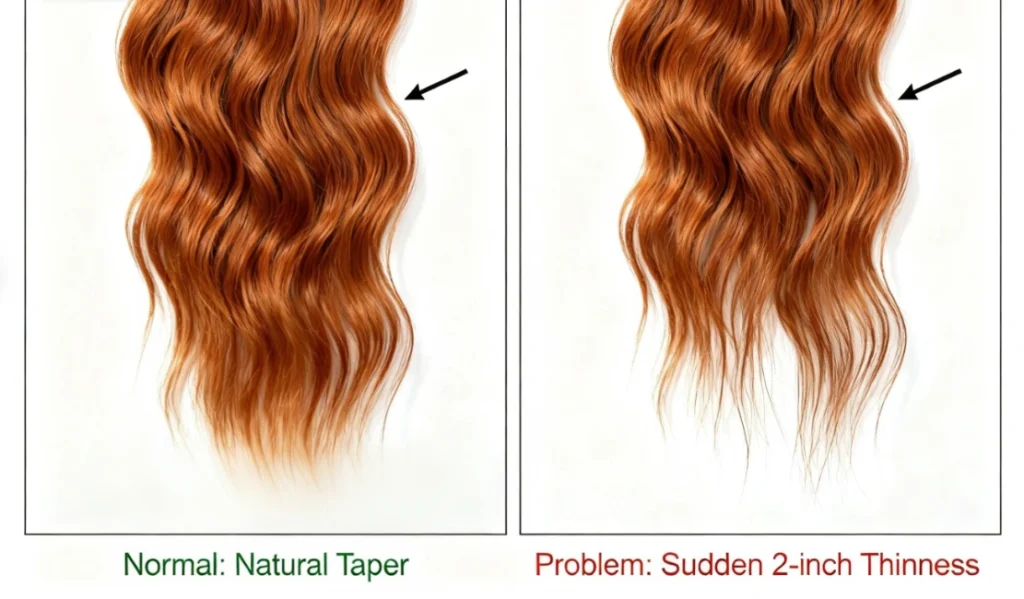
Pro Tip:
Lay the extension flat on a white surface (like a towel) and run your finger from root to end. You should feel a slow, gentle tapering—not a sharp change in thickness.
3 Steps to Keep Tape-In Ends Full & Prevent Further Thinning
Even normal thin ends can get sparser over time if you skip proper care. Follow these US-stylist-approved steps to maintain fullness for the 6-8 week lifespan of your tape-ins:
Brush Gently (Avoid Tugging the Ends)
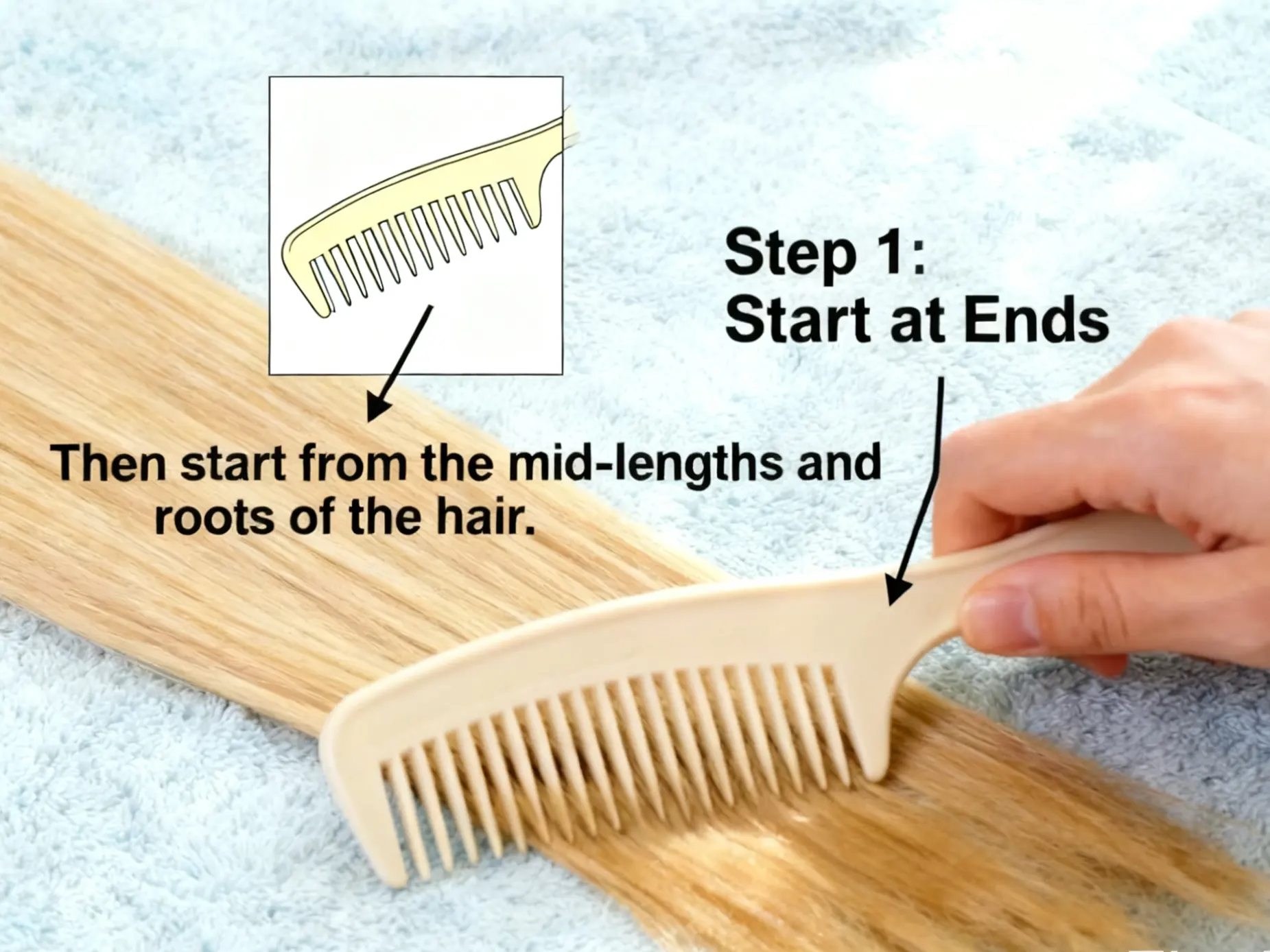
Why it works:
Tugging at thin ends can pull out healthy strands, making sparseness worse. Gentle brushing keeps strands intact.
Moisturize Ends (Don’t Skip This!)

Stylist Insight:
Stylist Insight: Hydrate, Hydrate, Hydrate! Human hair needs moisture. Use a leave-in conditioner and a deep conditioning mask weekly to keep the hair, especially the ends, supple and strong.
Still Have Questions?
-
Understanding Hair Extension Color Numbers
Choosing the right hair extension shade can be tricky—especially when you see color codes like #3/8/22 or #18P613. At first […]
-
Heating the Tape Area When Installing Tape-Ins: Necessary or a Misconception?
If you’ve ever installed or watched someone apply tape-in hair extensions, you’ve probably heard the debate: heating the tape area to […]
-
How to Find the Best Natural Light for Hair Color Photos (So We Can Match Your Shade Perfectly!)
If you’ve ever sent a hair photo thinking, “This is my exact color!” only to get a extensions shade that […]
[1] International Journal of Cosmetic Science, 2023. “Natural Hair Shaft Thickness Variation: Root-to-Tip Analysis.”
[2] 2024 Hair Extension Specialists Survey, American Association of Professional Hairstylists.
[3] ISO 9001:2015, Quality Management Systems for Beauty and Personal Care Products.
